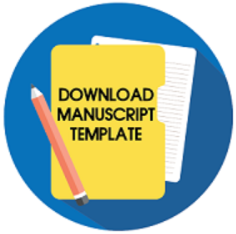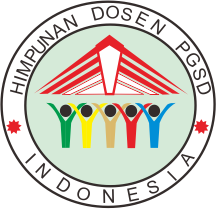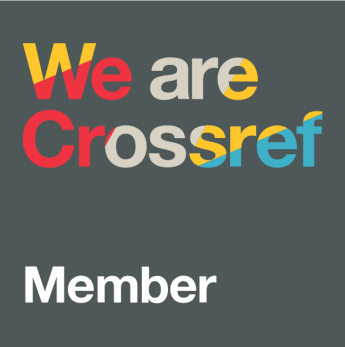The Development of PBL-based Water Cycle Diorama Media to Improve Grade V Learning Outcomes

Downloads
The lack of use of learning media at Kutowinangun 08 Salatiga Elementary School causes the learning outcomes of water cycle material in class V to be low. Based on these problems, this study aims to develop and test the feasibility and effectiveness of diorama media on water cycle material, hereinafter referred to as PBL-based SIAR in Grade V. This R&D research adapted nine of the ten steps of the Borg and Gall development model. Quantitative and qualitative data were collected using both test and non-test techniques, including questionnaire instruments, observation, interviews, and documentation. These data were then analyzed both descriptively and inferentially. The developed media was validated by media experts and material experts, who applied very valid criteria, achieving percentages of 82% and 90.67%. Based on the results of the paired sample t-test, it is evident that the significance value is 0.000 < 0.05, indicating that H0 is rejected and Ha is accepted. This means that the product developed is effective in improving student learning outcomes. The N-Gain test results obtained a gain value of 0.64 (medium). Based on the results of the response questionnaire, it was received very positively by teachers and students. From these results, it can be concluded that the diorama media SIAR (water cycle) based on PBL developed is highly feasible and effective in improving the learning outcomes of IPAS fifth-grade students at Kutowinangun 08 Salatiga State Elementary School. The contribution of this research to existing knowledge is twofold: it serves as an alternative and enriches the literature on SIAR diorama media based on PBL, which has been proven effective in improving learning outcomes for water cycle material, and provides new insights as a reference for further learning.
Downloads
Adawiyah, R., Faiz, A., & Yuningsih, D. (2022). Development of Magic Box Sikla (water cycle) media in science learning for grade V water cycle material. Edumaspul: Jurnal Pendidikan, 6(1), 599–606. http://dx.doi.org/10.33487/edumaspul.v6i1.2003
Aji, I. A. B., & Pujiastuti, P. (2022). Development of natural science supplement books based on local wisdom in integrative thematic learning in the elementary schools. Jurnal Prima Edukasia, 10(1), 82–95. https://doi.org/10.21831/jpe.v10i1.40173
Aliyyah, R. R., Rasmitadila, Gunadi, G., Sutisnawati, A., & Febriantina, S. (2023). Perceptions of elementary school teachers towards the implementation of the independent curriculum during the COVID-19 pandemic. Journal of Education and E-Learning Research, 10(2), 154–164. https://doi.org/10.20448/jeelr.v10i2.4490
Anisah, A. S., Widyastuti, R., Mubarokah, G., & Istiqomah, I. (2023). Mapping the materials of natural and social sciences in the Merdeka curriculum (case study at the mobilizing school SDN 04 Sukanegla, Garut Regency). Jurnal Tunas Pendidikan, 6(1). https://ejournal.ummuba.ac.id/index.php/pgsd/login
Aprilia, H., & Putri, L. I. (2020). The use of diorama media: A solution for learning scale mathematics on higher order thinking skills at the elementary level. Teorema: Teori dan Riset Matematika, 5(2), 143–155. https://jurnal.unigal.ac.id/index.php/teorema/article/view/3402
Ariani, F., & Sukmawarti. (2023). Development of diorama media on learning animal metamorphosis in class IV SDS Pembangunan Tanjung Morawa T.A 2022-2023. Jurnal Ilmiah PGSD FKIP Universitas Mandiri , 9(5). https://doi.org/https://doi.org/10.36989/didaktik.v9i5.2298
Arum, E. G., Sujana, A., & Isrokatun, I. (2024). The role of problem-based learning on concept mastery and responsibility of fourth grade students on the material of the region where I live and its natural wealth. Edukasia: Jurnal Pendidikan dan Pembelajaran, 5(1), 289–300. https://doi.org/https://doi.org/10.62775/edukasia.v5i1.758
Azzahra, I. E., Nurhasanah, A., & Hermawati, E. (2023). Implementation of the independent curriculum in learning IPAS at SDN 4 Purwawinangun. Jurnal Ilmiah PGSD FKIP Universitas Mandiri , 9(2). https://doi.org/10.36989/didaktik.v9i2.1270
Bujuri, D. A. (2018). Analysis of cognitive development of primary age children and its implication in teaching and learning activities. Literasi: Jurnal Ilmu Pendidikan, IX(1), 37–50. www.ejournal.almaata.ac.id/literasi
Cerovac, M., & Keane, T. (2024). Early insights into Piaget’s cognitive development model through the lens of the technologies curriculum. International Journal of Technology and Design Education, 61–81. https://doi.org/10.1007/s10798-024-09906-5
Chaniago, M. A., Arianingrum, R., & Shiddiqi, M. H. A. (2025). The impact of problem-based learning on students’ problem-solving skills and learning motivation: A perspective on learning styles. Jurnal Penelitian Pendidikan IPA, 11(5), 481–490. https://doi.org/10.29303/jppipa.v11i5.11045
Darmawati, Y., & Mustadi, A. (2023). The effect of problem-based learning on the critical thinking skills of elementary school students. Jurnal Prima Edukasia, 11(2), 142–151. https://doi.org/10.21831/jpe.v11i2.55620
Desyandri, Agustina, Y., & Lusiana, D. (2024). The development of problem-based learning model e-module integrated with multiculturalism in elementary schools. Jurnal Prima Edukasia, 12(2), 183–193. https://doi.org/10.21831/jpe.v12i2.62368
Fadilah, N., Aloysius, S., & Wahyudi. (2025). Problem-based learning based on coastal abrasion cases to improve conceptual understanding and problem-solving ability. Jurnal Penelitian Pendidikan IPA, 11(5), 268–273. https://doi.org/10.29303/jppipa.v11i5.8372
Febriani, C. (2017). The effect of video media on learning motivation and cognitive learning outcomes in natural science subject of the fifth grade students of elementary schools. Jurnal Prima Edukasia, 5(1), 11–21. https://doi.org/10.21831/jpe.v5i1.8461
Fitria, S. Z. U., & Suryanti. (2023). The effect of problem-based learning model assisted by diorama media on IPA learning outcomes in class IV SD. Jurnal Penelitian Pendidikan Guru Sekolah Dasar, 11(5). https://ejournal.unesa.ac.id/index.php/jurnal-penelitian-pgsd/article/view/53562
Haikal, M. F., Anwar, S., & Islamy, M. R. F. (2025). Problem based learning methods in the digital era: measuring the impact on students learning motivation and social character. Jurnal Iqra’ : Kajian Ilmu Pendidikan, 10(1), 1–17. https://doi.org/https://doi.org/10.25217/ji.v10i1.5053
Handayani, F., & Hayati, D. K. (2020). Development of contextual-based media diorama on IPA learning in class IV primary school. Journal of Biology Education Research, 1(2), 98–108. https://doi.org/https://doi.org/10.32332/al-jahiz.v1i2.3149
Harokah, S., Wibowo, S. E., Sudigdo, A., Yudianto, A., & Wulansari, I. Y. (2024). The effectiveness of problem-based learning methods in improving prospective elementary school teachers’ critical thinking skills. Al Ibtida: Jurnal Pendidikan Guru MI, 11(1), 74–85. https://doi.org/10.24235/al.ibtida.snj.v11i1.14104
Hidayah, R., & Pujiastuti, P. (2016). The influence of PBL on science process skills and cognitive learning outcomes of IPA in elementary school students. Jurnal Prima Edukasia, 4(2), 186–197. https://doi.org/10.21831/jpe.v4i2.7789
Hoppe, T., Seidel, T., Renkl, A., & Rieß, W. (2024). Advancing preservice science teachers’ skills to assess student thinking on-the-fly through practice-based learning. Journal of Teacher Education, 76(1), 42–56. https://doi.org/10.1177/00224871241237497
Humaira, T., & Ninawati, M. (2023). Development of contextual media diorama of water cycle in science subject in elementary school. Jurnal Cakrawala Pendas, 9(4), 631–641. https://doi.org/10.31949/jcp.v9i4.5653
Husni, M., Al Ihwanah, Wibowo, D. R., & Lubis, M. A. (2023). Merdeka curriculum based EBA learning model in elementary schools. Al Ibtida: Jurnal Pendidikan Guru MI, 10(2), 275–287. https://doi.org/10.24235/al.ibtida.snj.v10i2.15069
Kruk, M., & Zawodniak, J. (2020). A comparative study of the experience of boredom in the L2 and L3 classroom. English Teaching and Learning, 44(4), 417–437. https://doi.org/10.1007/s42321-020-00056-0
Lailiyah, S., Kusaeri, Dina, A. M., Irmanila, E., & Nuryaningsih, P. D. (2023). Development of play mathematics with technology media to train students’ critical thinking and problem solving. PYTHAGORAS Jurnal Pendidikan Matematika, 18(1), 14–36. https://doi.org/10.21831/pythagoras.v18i1.50957
Latifah, A., & Maryani, I. (2021). Developing HOTS questions for the materials of human and animals respiratory organs for grade V of elementary school. Jurnal Prima Edukasia, 9(2), 179–192. https://doi.org/10.21831/jpe.v9i2.34172
Lestari, P. D., Baiduri, B., & Ummah, S. K. (2024). Problem-based learning with iSpring assisted inquiry method on critical thinking skills. Journal of Education and Learning, 18(1), 148–153. https://doi.org/10.11591/edulearn.v18i1.21089
Manurung, A. S., & Pappachan, P. (2025). The role of discovery learning in efforts to develop students’ critical thinking abilities. Journal of Education and Learning, 19(1), 46–53. https://doi.org/10.11591/edulearn.v19i1.21788
Ndiung, S., & Menggo, S. (2024). Problem-based learning analysis in strengthening college students’ interpersonal communication skill. Journal of Education and Learning, 18(4), 1350–1361. https://doi.org/10.11591/edulearn.v18i4.21219
Nelwati, S., & Rahman, H. K. (2022). Analysis of Jean Piaget’s cognitive theory of language development in elementary school-age children. Jurnal Riset Pendidikan Dasar dan Karakter, 4. https://ejurnal.stkipadzkia.ac.id/index
Nengsih, S., Haryanti, Y. D., & Yonanda, D. A. (2024). Optimizing the use of learning media to understand the human digestive system at the elementary school level. Sekolah Dasar: Kajian Teori Dan Praktik Pendidikan, 33(01), 49–58. https://doi.org/http://dx.doi.org/10.17977/um009v33i12024p49-58
Nursalam, N., Sulaeman, S., & Latuapo, R. (2023). Implementation of independent curriculum through project based learning at Nurul Falah and Ar-Rasyid Banda Integrated Playgroup. Jurnal Pendidikan dan Kebudayaan, 8(1), 17–34. https://doi.org/10.24832/jpnk.v8i1.3769
Nurtanto, M., Fawaid, M., & Sofyan, H. (2020). Problem Based Learning (PBL) in Industry 4.0: Improving learning quality through character-based literacy learning and life career skill (LL-LCS). Journal of Physics: Conference Series, 1573(1), 1–10. https://doi.org/10.1088/1742-6596/1573/1/012006
Ministry of Education, Culture, Research, and Technology of the Republic of Indonesia. (2022). Regulation Number 16 of 2022 concerning the Process Standards. Ministry of Education, Culture, Research, and Technology.
Ministry of Education, Culture, Research, and Technology of the Republic of Indonesia. (2022). Regulation Number 7 of 2022 concerning Higher Education Standards. Ministry of Education, Culture, Research, and Technology.
Pratiwi, E. T., & Setyaningtyas, E. W. (2020). Critical thinking skills of elementary school students with problem-based learning model and project-based learning model. Jurnal Basicedu, 4(2), 379–388. https://doi.org/https://doi.org/10.31004/basicedu.v4i2.362
Putra, I. K. D., & Suniasih, N. W. (2021). Diorama media of water cycle material in science content of grade V elementary school. Jurnal Imiah Pendidikan dan Pembelajaran, 5(2). https://doi.org/10.23887/jipp.v5i2
Rachman, A., Putro, H. Y. S., Rusandi, M. A., & Situmorang, D. D. B. (2024). The development and validation of the “Kuesioner Tema Proyek Penguatan Profil Pelajar Pancasila” (KT P5): A new tool for strengthening the Pancasila Student Profile in Indonesian pioneer schools. Heliyon, 10(16), 1–12. https://doi.org/10.1016/j.heliyon.2024.e35912
Rahmatulloh, F. S., Purwanto, Ulfi, T., & Oraby, G. A. E. M. (2023). Application of media notion to improve students’ critical thinking through TaRl learning at SMAN 6 Malang. Jurnal Teori Dan Praksis Pembelajaran IPS, 8(2), 64–75. https://doi.org/10.17977/um022v8i22023p64
Sanjaya, A. S. (2024). Improving learning outcomes in natural sciences with real props for grade vi students. Edukasia: Jurnal Pendidikan dan Pembelajaran, 5(1), 433–440. https://doi.org/https://doi.org/10.62775/edukasia.v5i1.782
Sari, I. K. (2018). The effect of problem-based learning and project-based learning on the achievement motivation. Jurnal Prima Edukasia, 6(2), 129–135. https://doi.org/10.21831/jpe.v6i2.17956
Seftriana, A., Wulan, S., & Hasanah, N. (2020, November). Development of diorama learning media for the water cycle in science subject. In Prosiding Seminar Nasional Pendidikan STKIP Kusuma Negara III (pp. 21-30). https://jurnal.stkipkusumanegara.ac.id/index.php/semnara2020/article/view/693
Seibert, S. A., DNP, RN, & CNE. (2021). Problem-based learning: A strategy to foster generation Z’s critical thinking and perseverance. Teaching and Learning in Nursing, 16(1), 85–88. https://doi.org/10.1016/j.teln.2020.09.002
Selirowangi, N. B., Aisyah, N., & Rohmah, L. (2024). Application of problem based learning model to improve higher order thinking skills (HOTS). Edukasia: Jurnal Pendidikan Dan Pembelajaran, 5(1), 31–40. https://doi.org/https://doi.org/10.62775/edukasia.v5i1.714
Sugiyanto, LN, S. Y., & Supriatna, M. (2023). The Implementation of Tut Wuri Handayani Values at the Taman Muda Elementary School Jetis Yogyakarta. Jurnal Prima Edukasia, 11(2), 303–318. https://doi.org/10.21831/jpe.v11i2.63617
Sugiyono. (2019). Quantitative, Qualitative, and R&D Research Methods. Alfabeta.
Sukarno, Marmoah, S., Purwanti, J. I. S., Supianto, Istiyati, S., & Mahfud, H. (2024). Implementation of independent curriculum for elementary schools in Indonesian schools abroad. Jurnal Penelitian Pendidikan IPA, 10(10), 7228–7235. https://doi.org/10.29303/jppipa.v10i10.8398
Sulthon, M., Pujiastuti, P., & Retnawati, H. (2021). What is the teacher’s challenge on the developing of learning media to increase critical thinking ability and the character? Jurnal Prima Edukasia, 9(1), 55–64. https://doi.org/10.21831/jpe.v9i1.34876
Susanti, M., Suyanto, S., Jailani, J., & Retnawati, H. (2023). Problem-based learning for improving problem-solving and critical thinking skills: A case on probability theory course. Journal of Education and Learning, 17(4), 507–525. https://doi.org/10.11591/edulearn.v17i4.20866
Toma, A. A., & Reinita. (2023). Development of Canva learning media based on problem-based learning model in class IV elementary school. Sekolah Dasar: Kajian Teori dan Praktik Pendidikan , 32(02), 162–177. https://doi.org/http://dx.doi.org/10.17977/um009v32i22023p162-177
Triwahyuningtyas, D., Ningtyas, A. S., & Rahayu, S. (2020). The problem-based learning e-module of planes using Kvisoft Flipbook Maker for elementary school students. Jurnal Prima Edukasia, 8(2), 199–208. https://doi.org/10.21831/jpe.v8i2.34446
Trullàs, J. C., Blay, C., Sarri, E., & Pujol, R. (2022). Effectiveness of problem-based learning methodology in undergraduate medical education: a scoping review. BMC Medical Education, 22(1). https://doi.org/10.1186/s12909-022-03154-8
Wahyuningtyas, R., & Sulasmono, B. S. (2020). The importance of media in learning to improve learning outcomes in primary schools. Jurnal Ilmu Pendidikan, 2, 23–27. https://edukatif.org/index.php/edukatif/index
Walck-Shannon, E. M., Barton, H. D., Rowell, S. F., Chalker, D. L., & Fink, A. (2025). Students don’t learn the way they think they do in a large, active-learning genetics course. CBE Life Sciences Education, 24(2), 1–13. https://doi.org/10.1187/cbe.24-10-0251
Widiana, R., & Tyas, D. N. (2024). Development of Wordwall-based educational games integrated with problem-based learning models on the material of the form of substances and their changes. Pendas: Jurnal Ilmiah Pendidikan Dasar, 9(3), 978–993. https://doi.org/https://doi.org/10.23969/jp.v9i3.15588
Widiastuti, S., Harun, Cholimah, N., & Tjiptasari, F. (2024). Implementation of character values through project learning for early childhood in the Kurikulum Merdeka. Jurnal Pendidikan dan Kebudayaan, 9(1), 85–109. https://doi.org/10.24832/jpnk.v9i1.4631
Wijayanti, I. D., & Ekantini, A. (2023). Implementation of kurikulum merdeka in IPAS learning at MI/SD. Jurnal Ilmiah Pendidikan Dasar, 8(2). https://doi.org/10.31004/basicedu.v7i5.5766
Wulandari, T., & Nawangsari, N. A. F. (2024). Project-based learning in the Merdeka curriculum in terms of primary school students’ learning outcomes. Edukasia: Jurnal Pendidikan dan Pembelajaran, 5(2), 31–42. https://doi.org/10.62775/edukasia.v5i2.793
Wuwur, E. S. P. O. (2023). Problems in implementing the independent curriculum in elementary schools. Soko Guru: Jurnal Ilmu Pendidikan, 3(1). https://ejurnal.politeknikpratama.ac.id/index.php
Yulianti, D., & Herpratiwi. (2024). Development of a science, environment, technology, and society-based learning module to foster critical thinking in elementary students. Journal of Education and Learning, 18(4), 1372–1384. https://doi.org/10.11591/edulearn.v18i4.21713
Zhao, W., He, L., Deng, W., Zhu, J., Su, A., & Zhang, Y. (2020). The effectiveness of the combined problem-based learning (PBL) and case-based learning (CBL) teaching method in the clinical practical teaching of thyroid disease. BMC Medical Education, 20(1). https://doi.org/10.1186/s12909-020-02306-y
Copyright (c) 2025 Jurnal Prima Edukasia

This work is licensed under a Creative Commons Attribution-ShareAlike 4.0 International License.
The copyright of the received article shall be assigned to the journal as the publisher of the journal. The intended copyright includes the right to publish the article in various forms (including reprints). The journal maintains the publishing rights to the published articles.

Jurnal Prima Edukasia by http://journal.uny.ac.id/index.php/jpe/index is licensed under a Creative Commons Attribution-ShareAlike 4.0 International License.


























